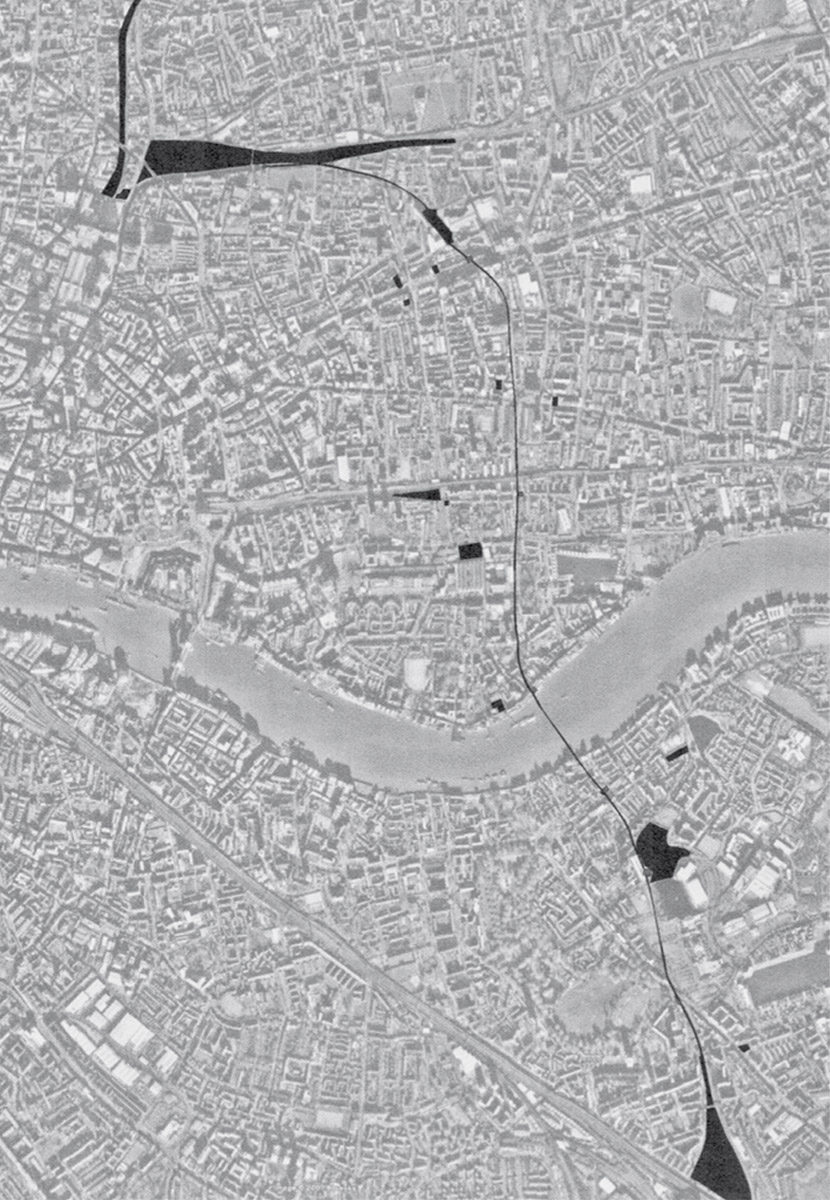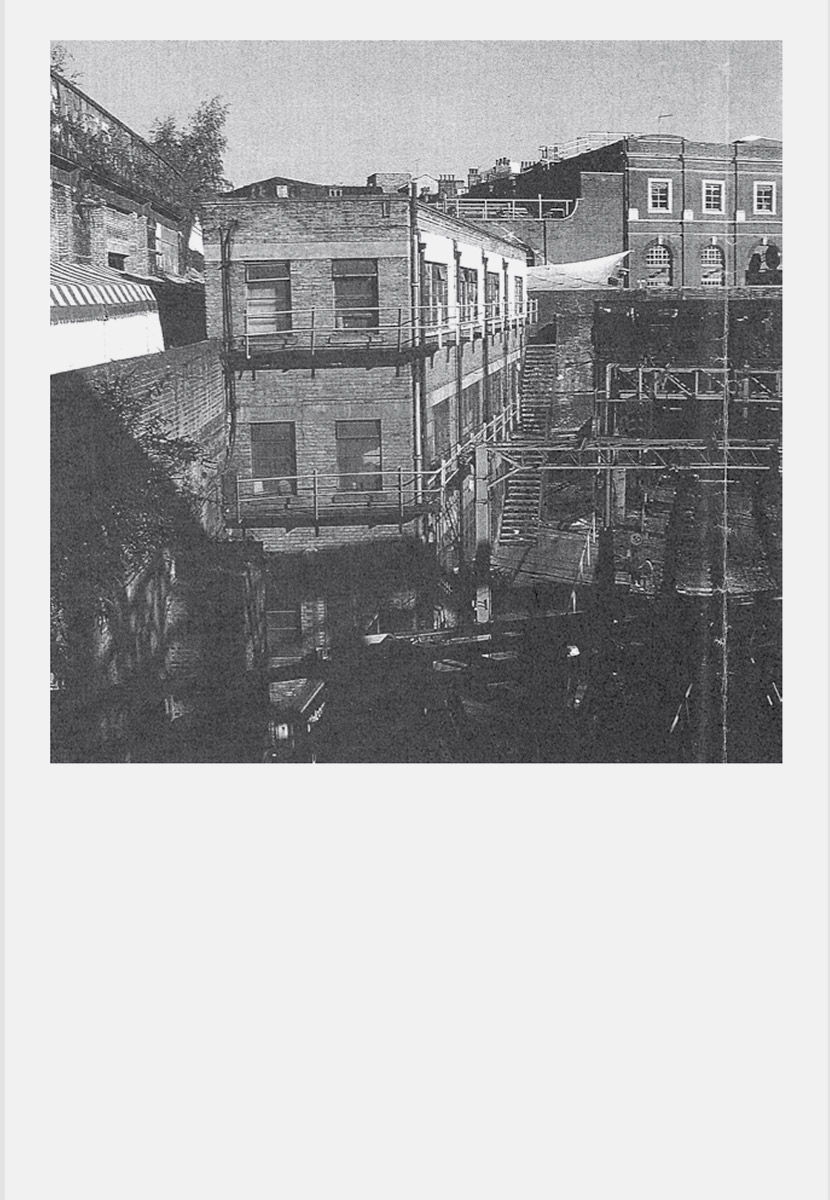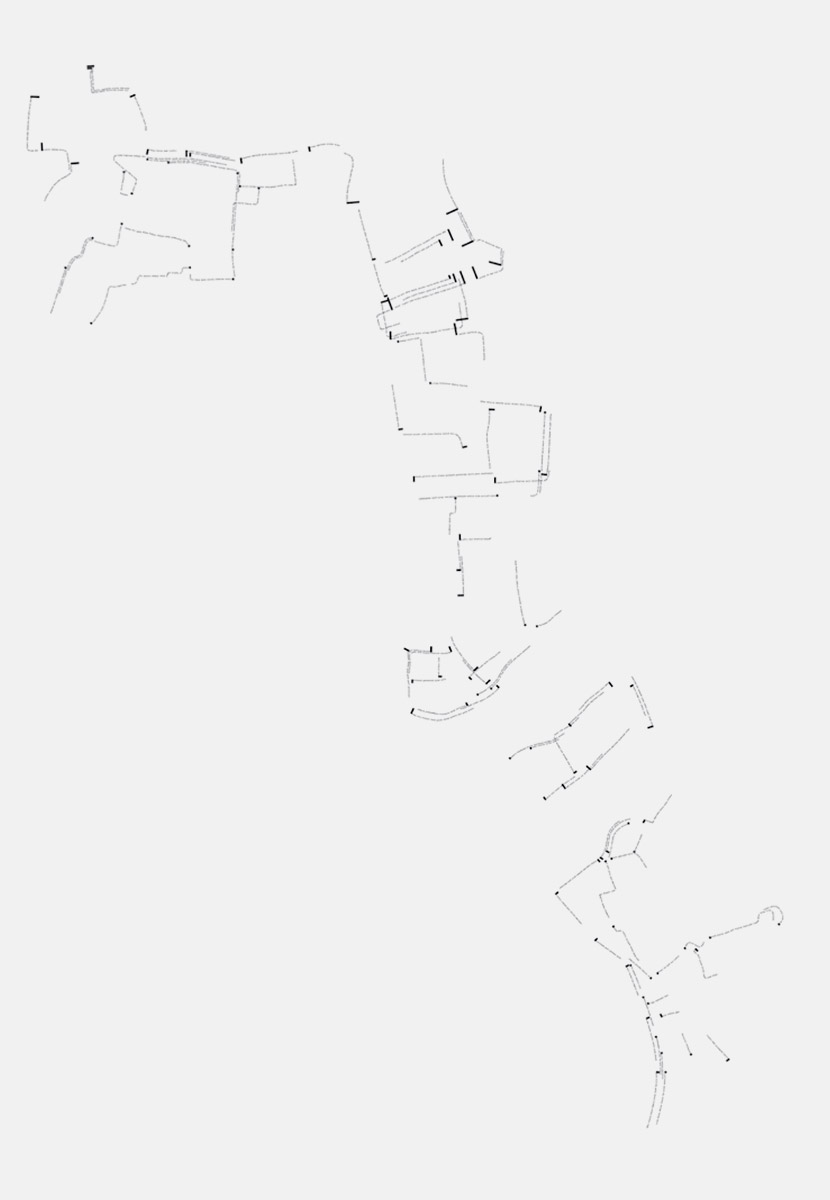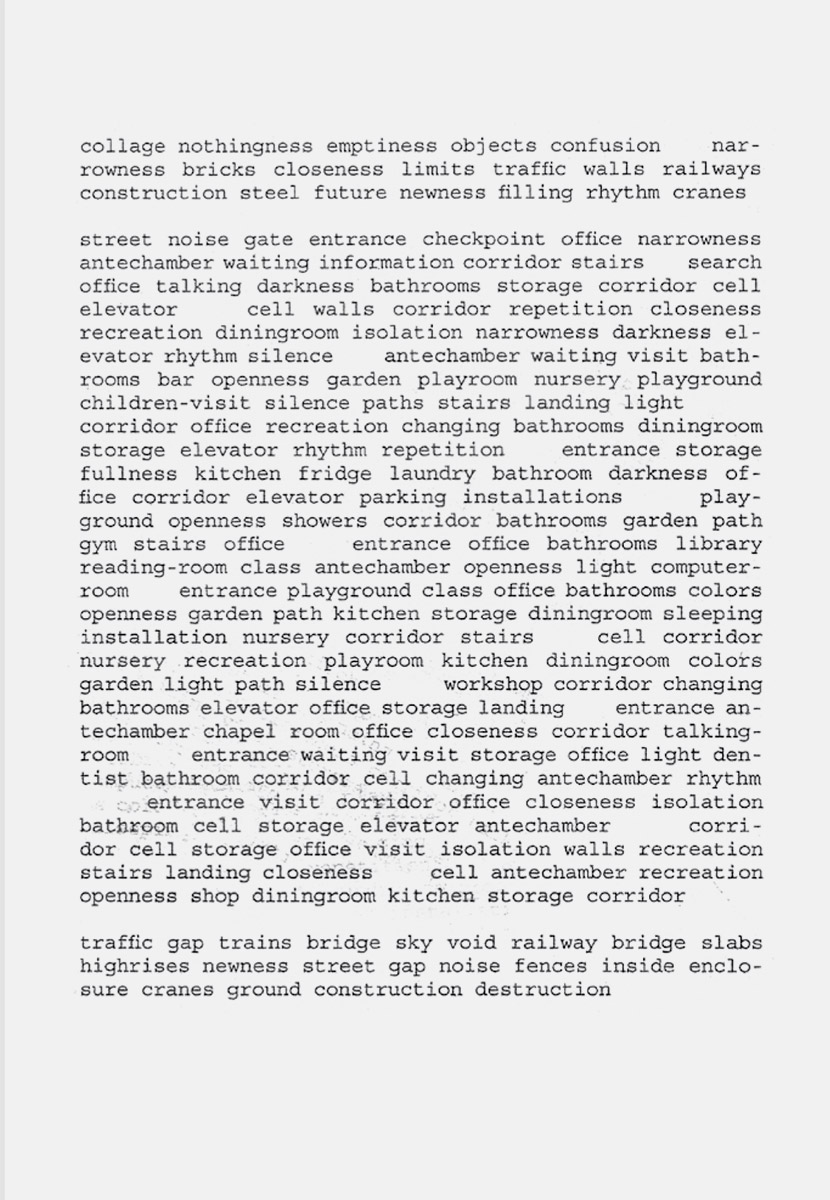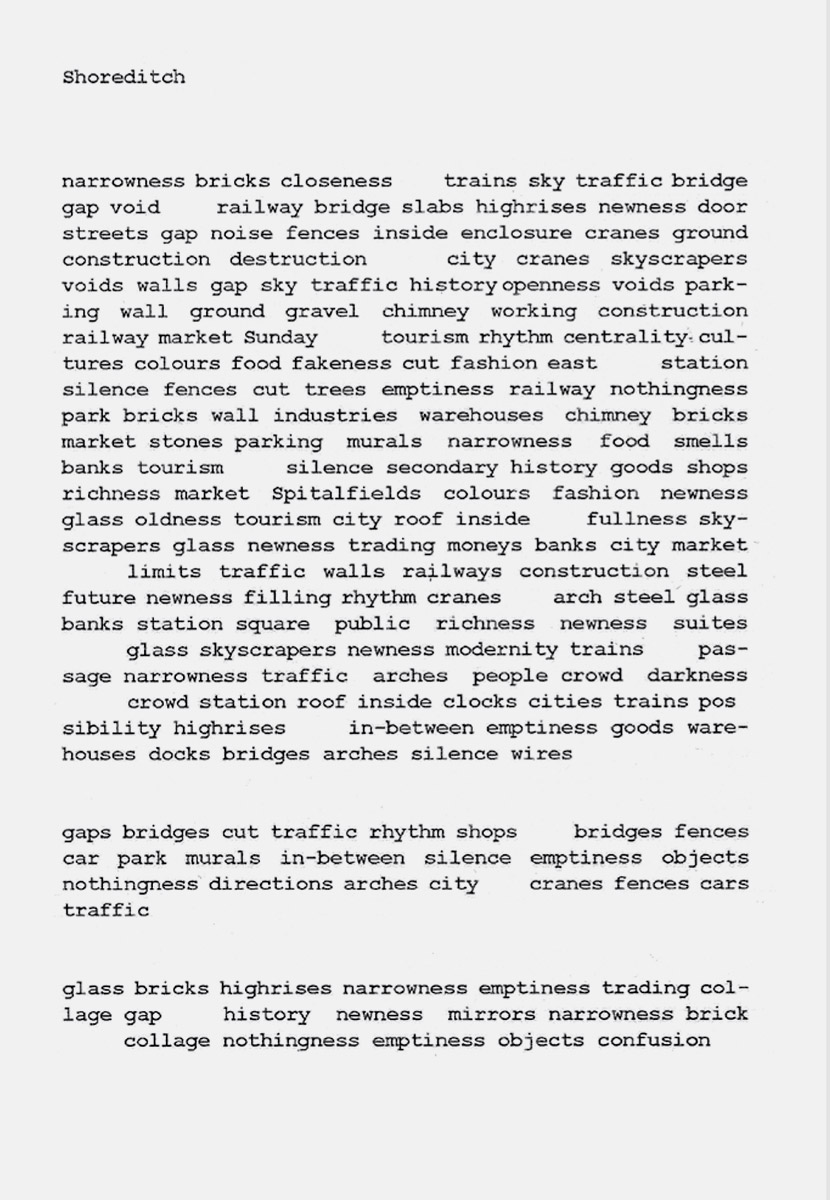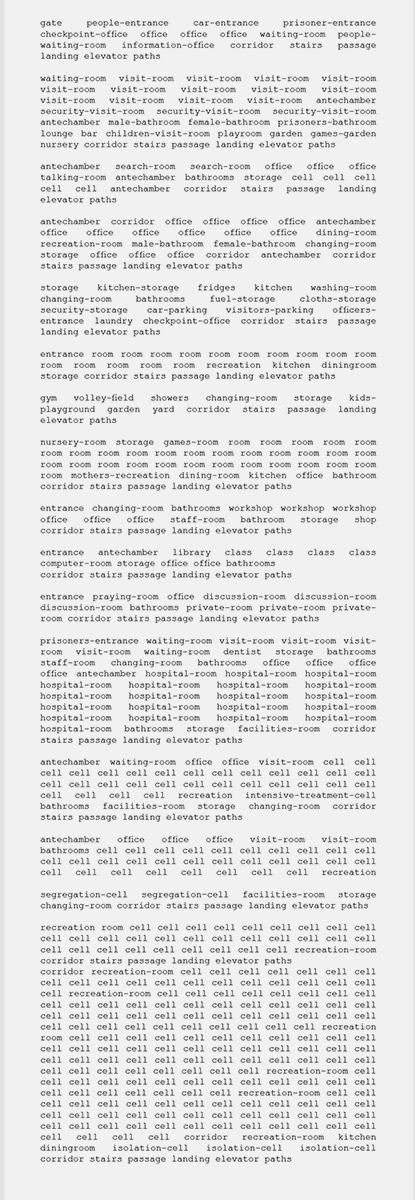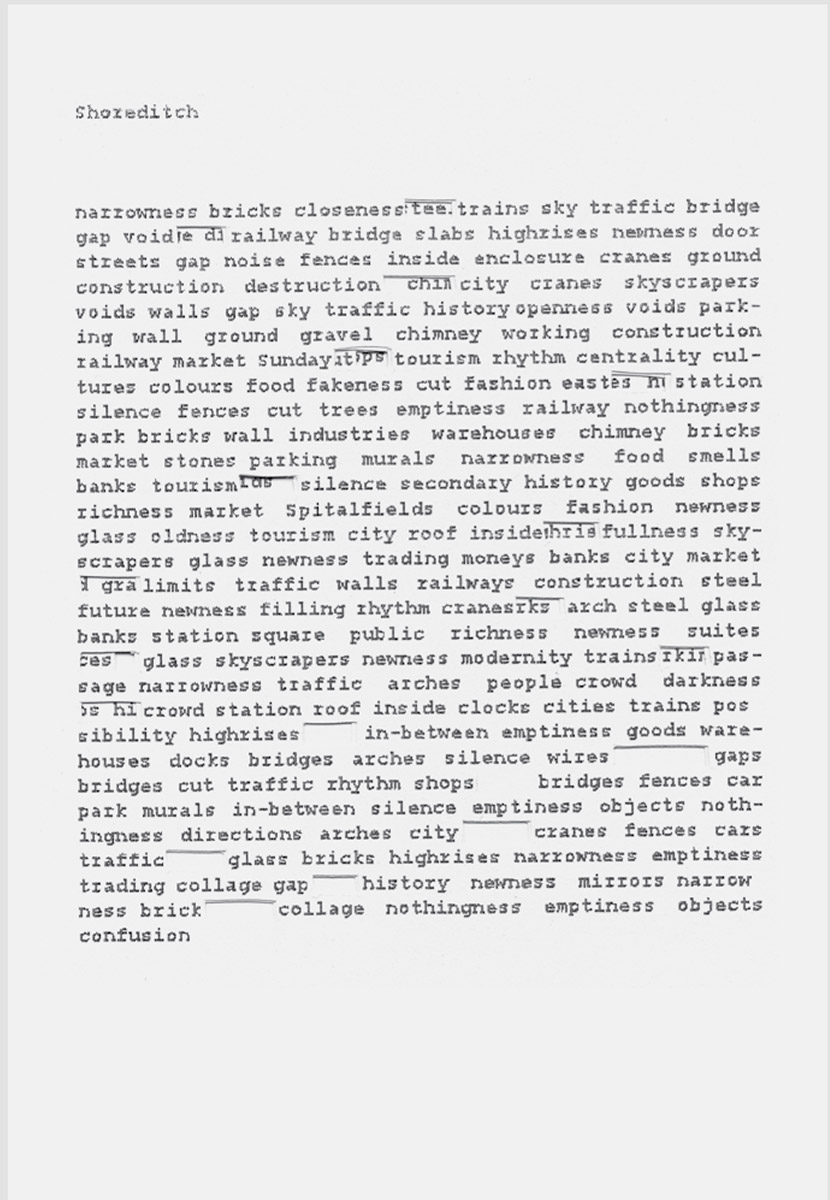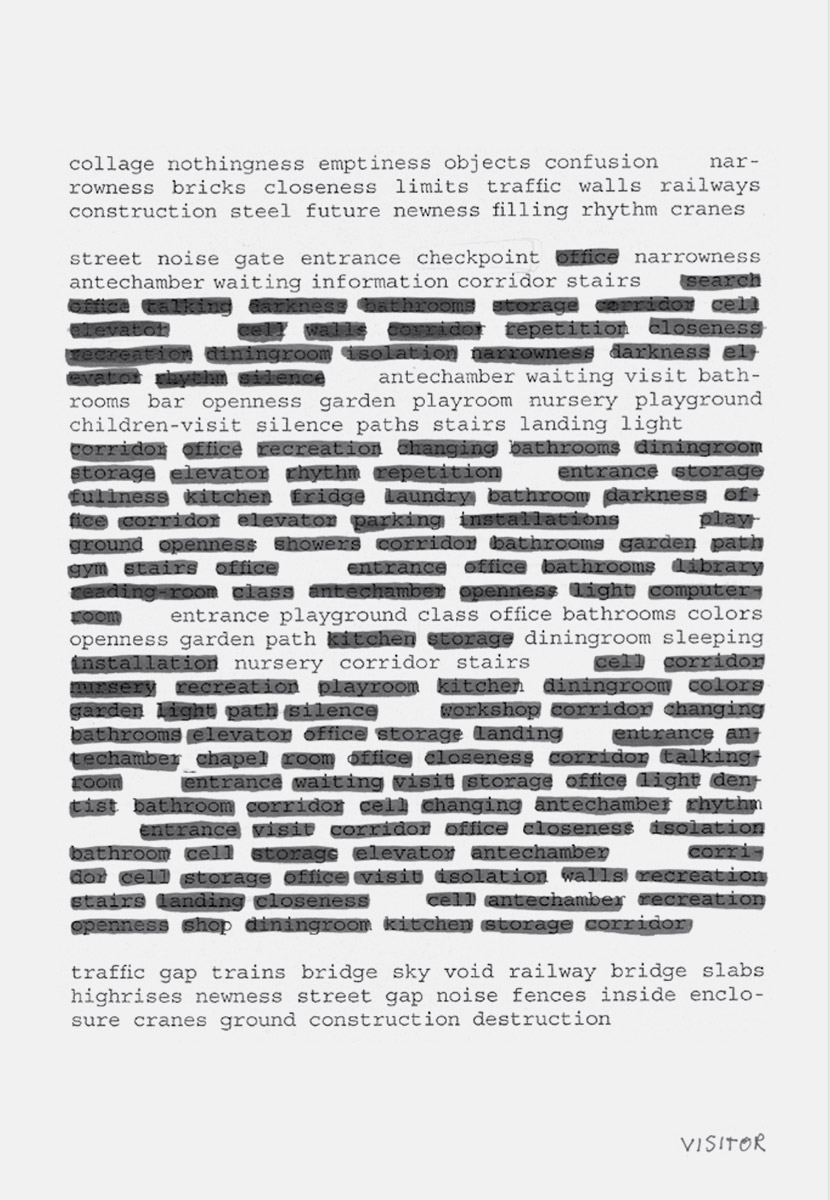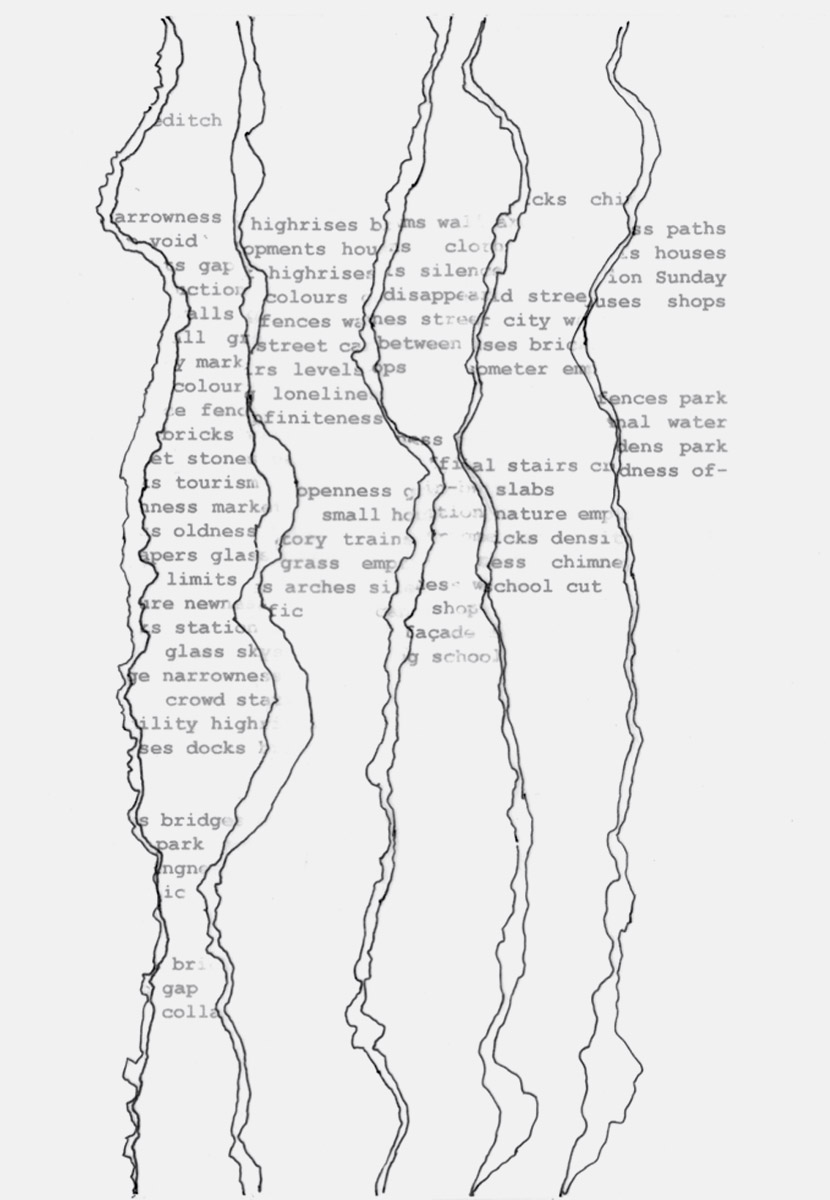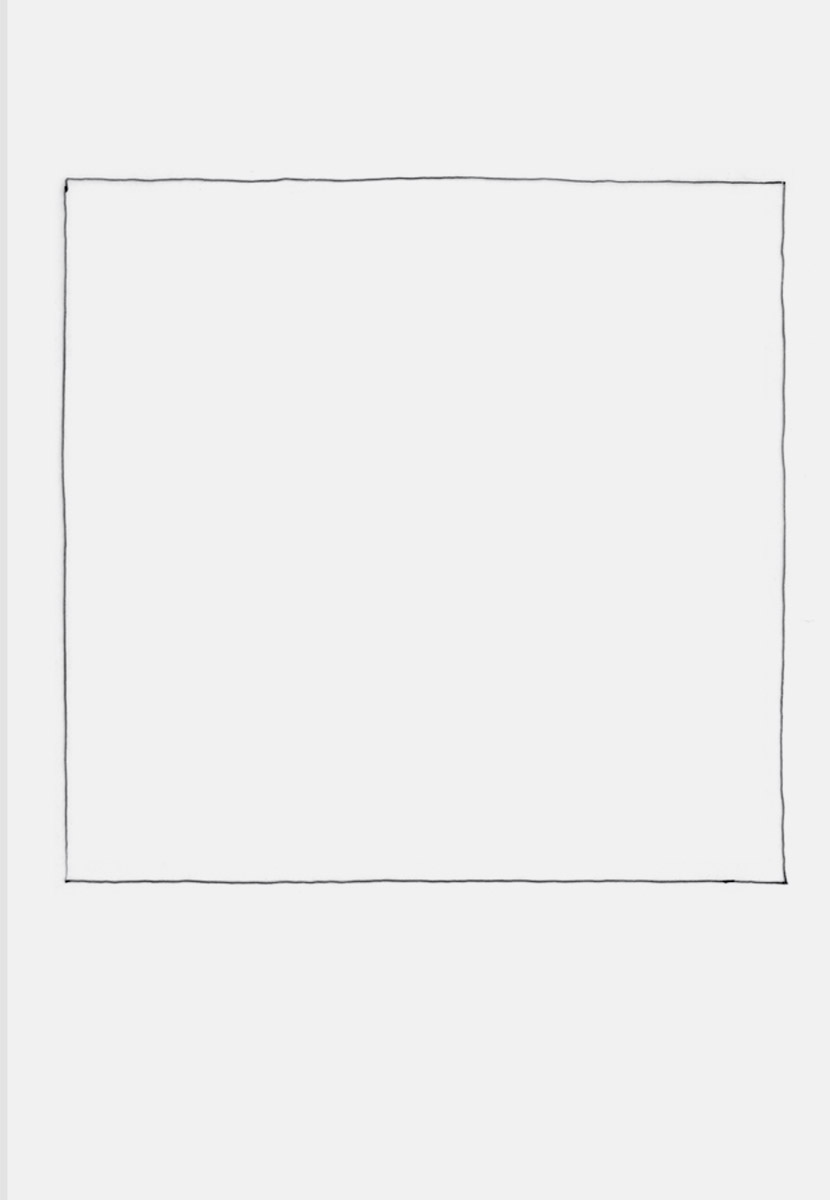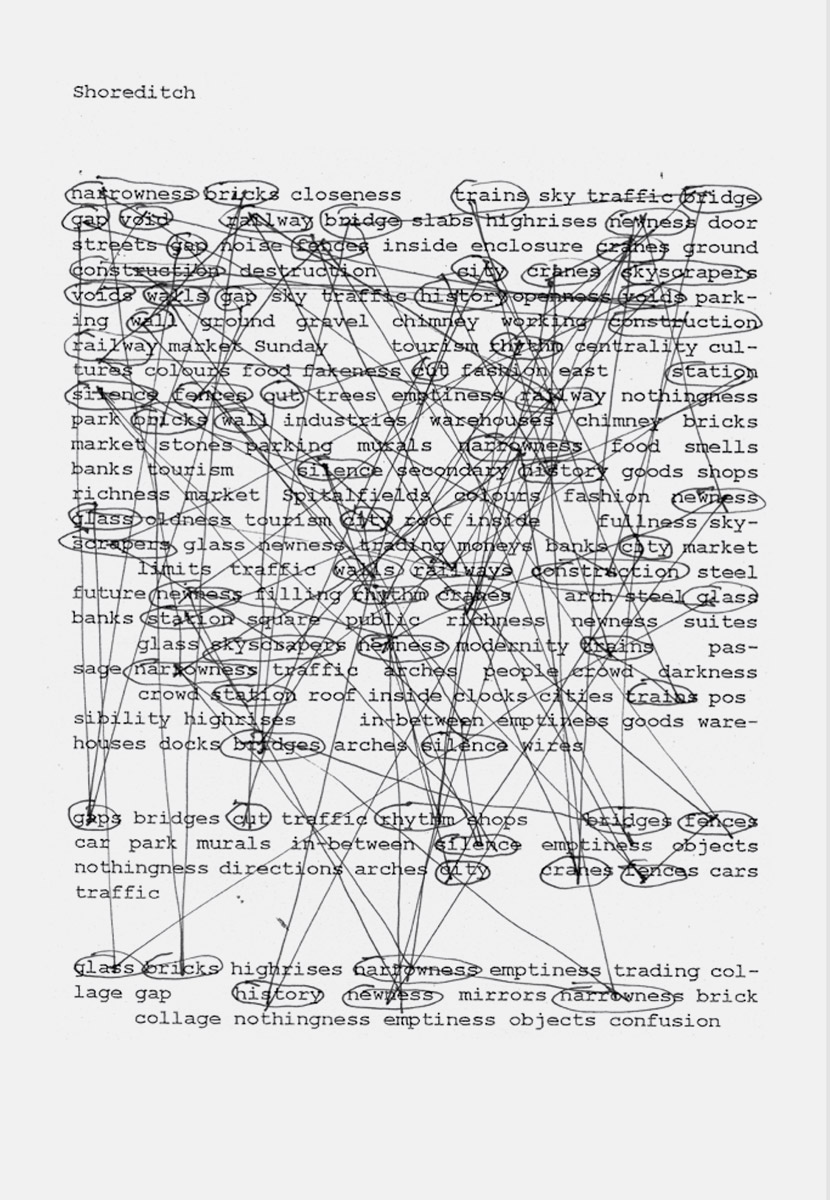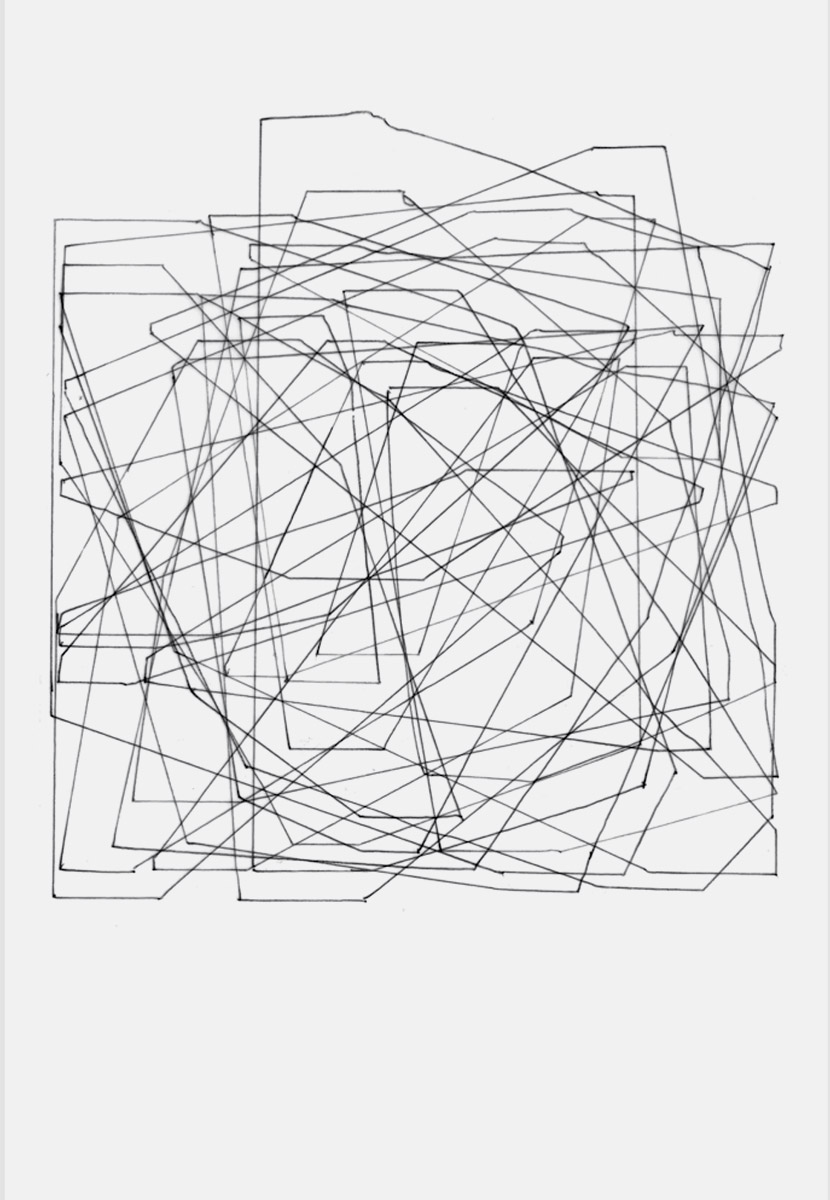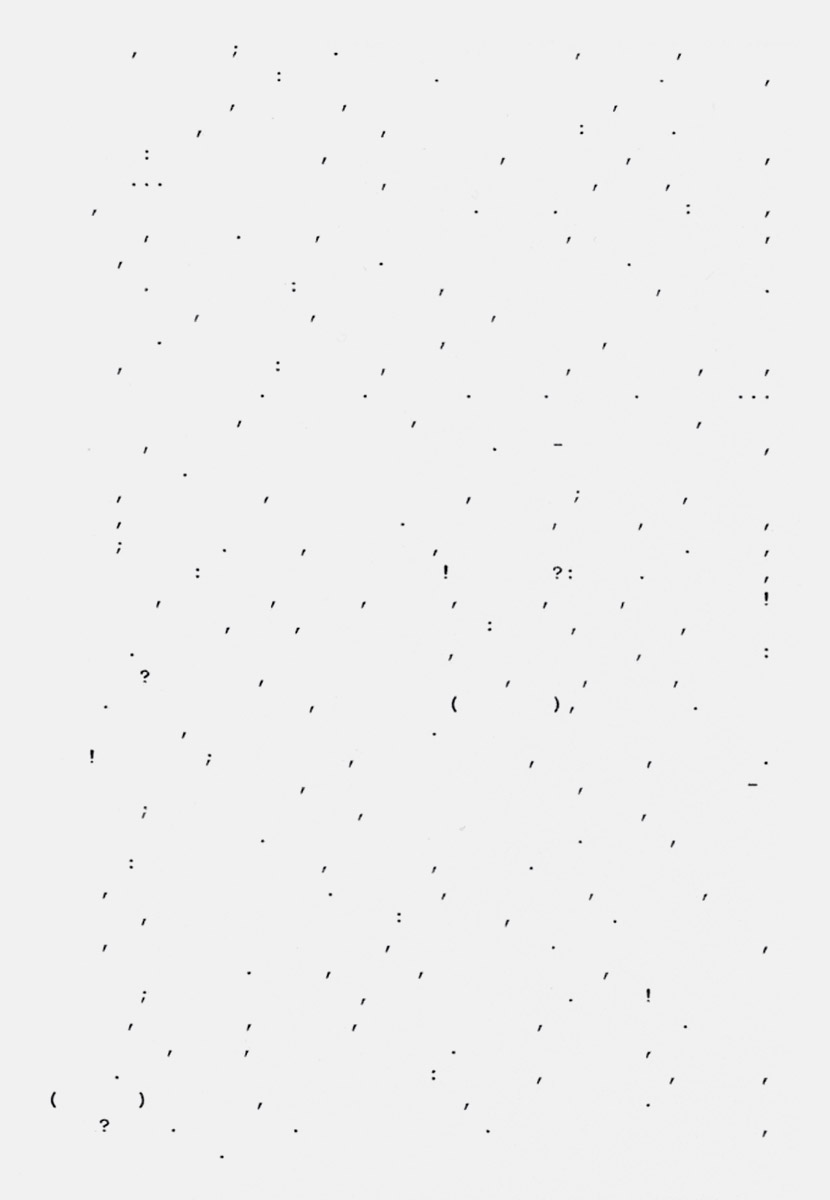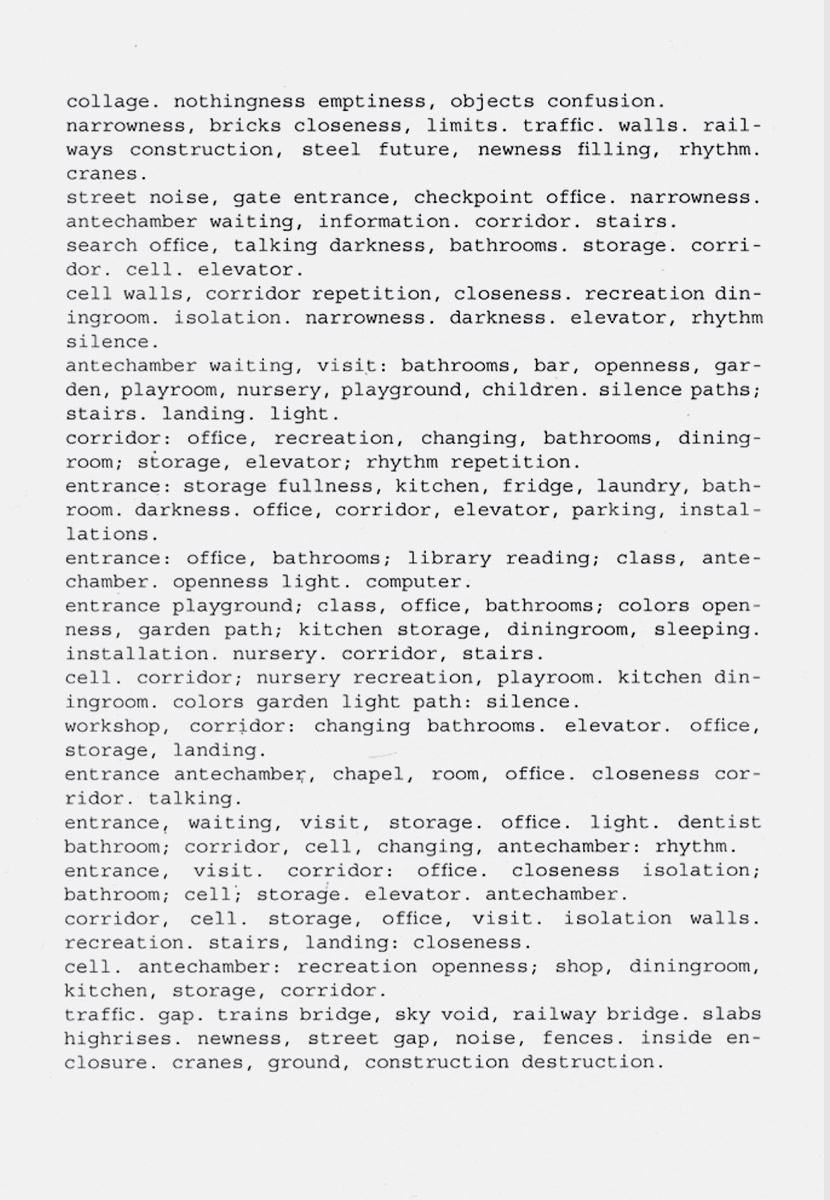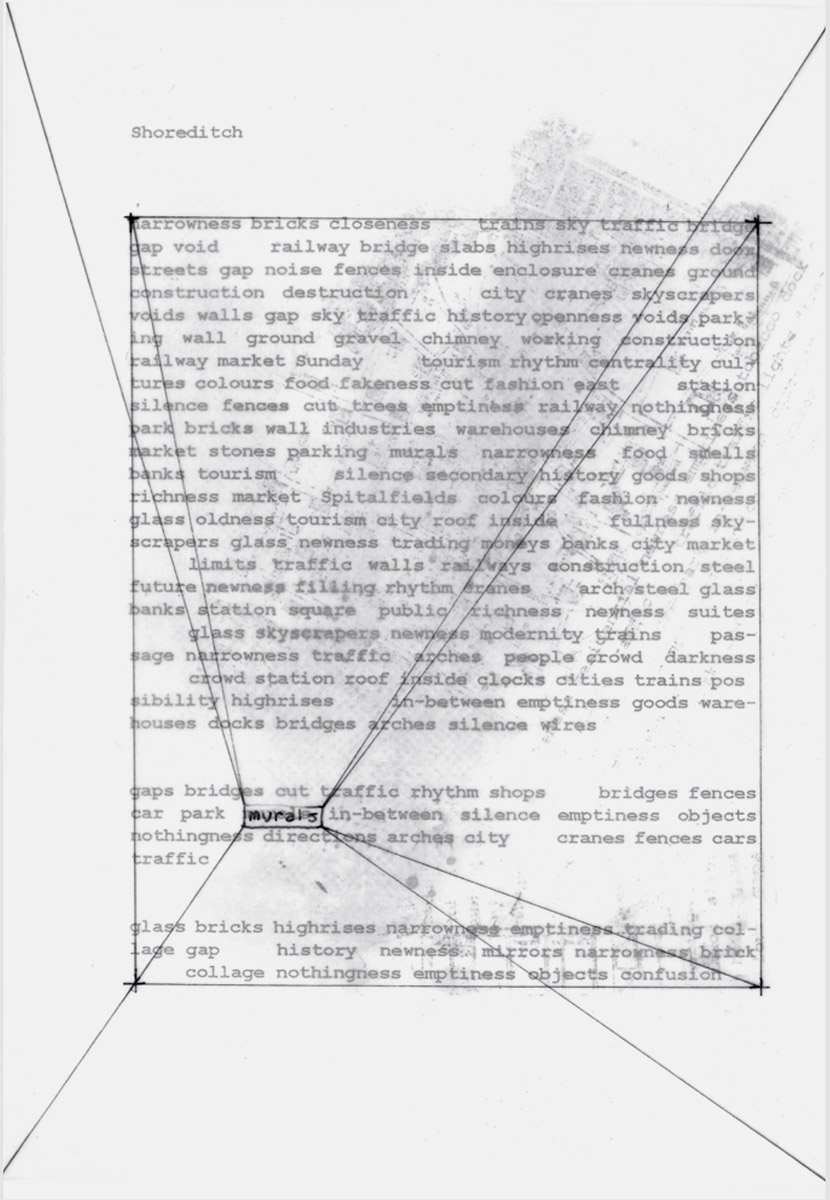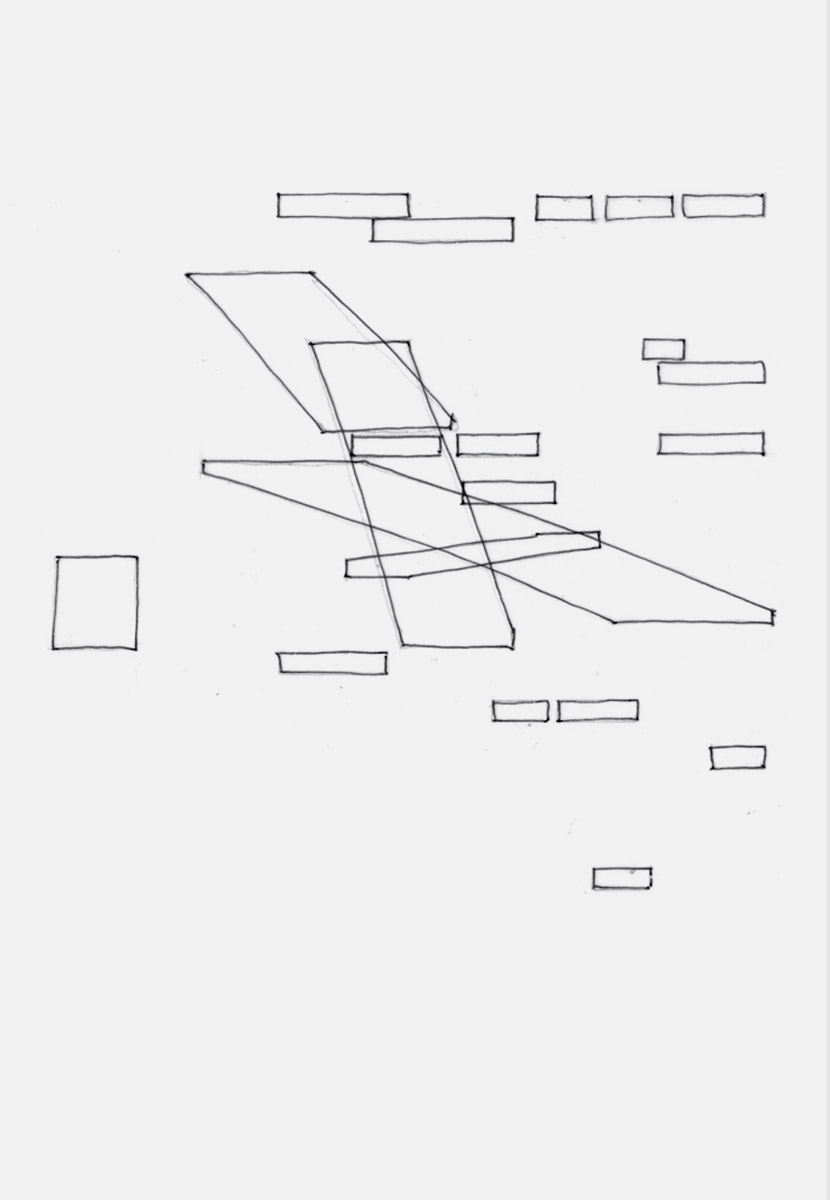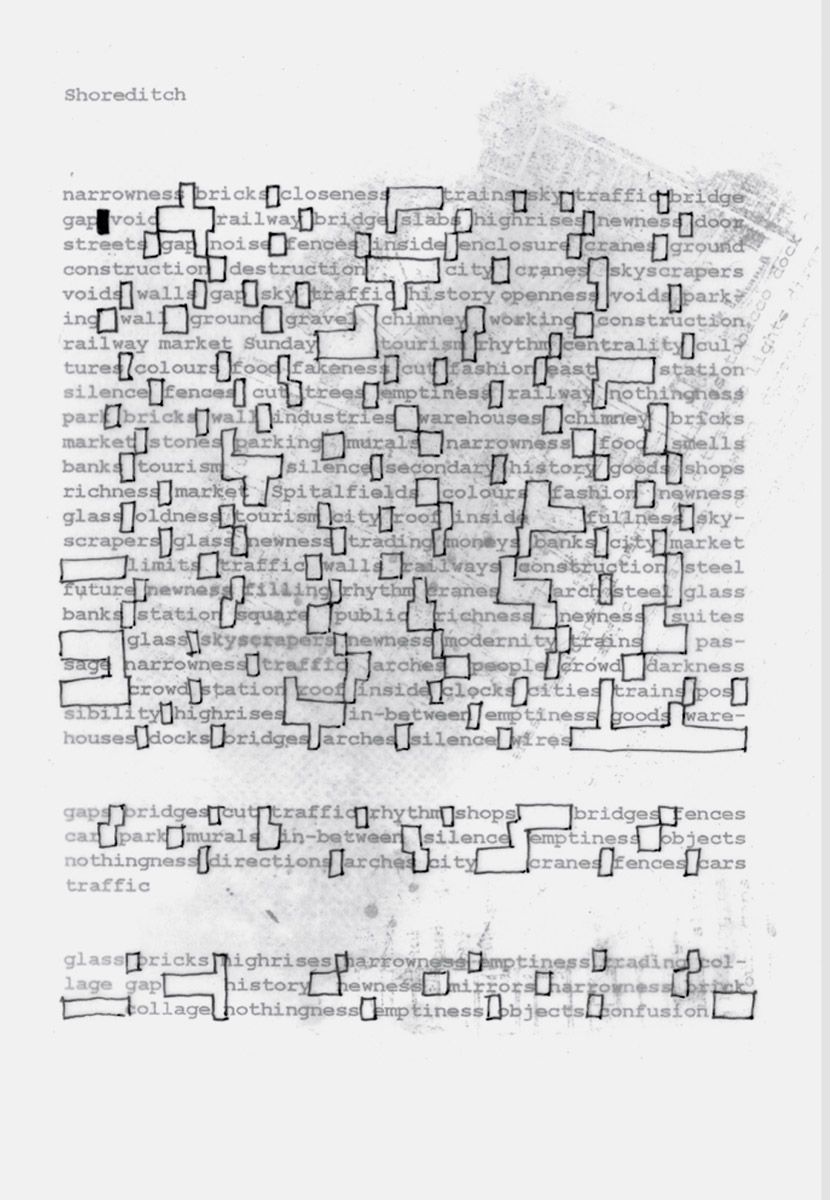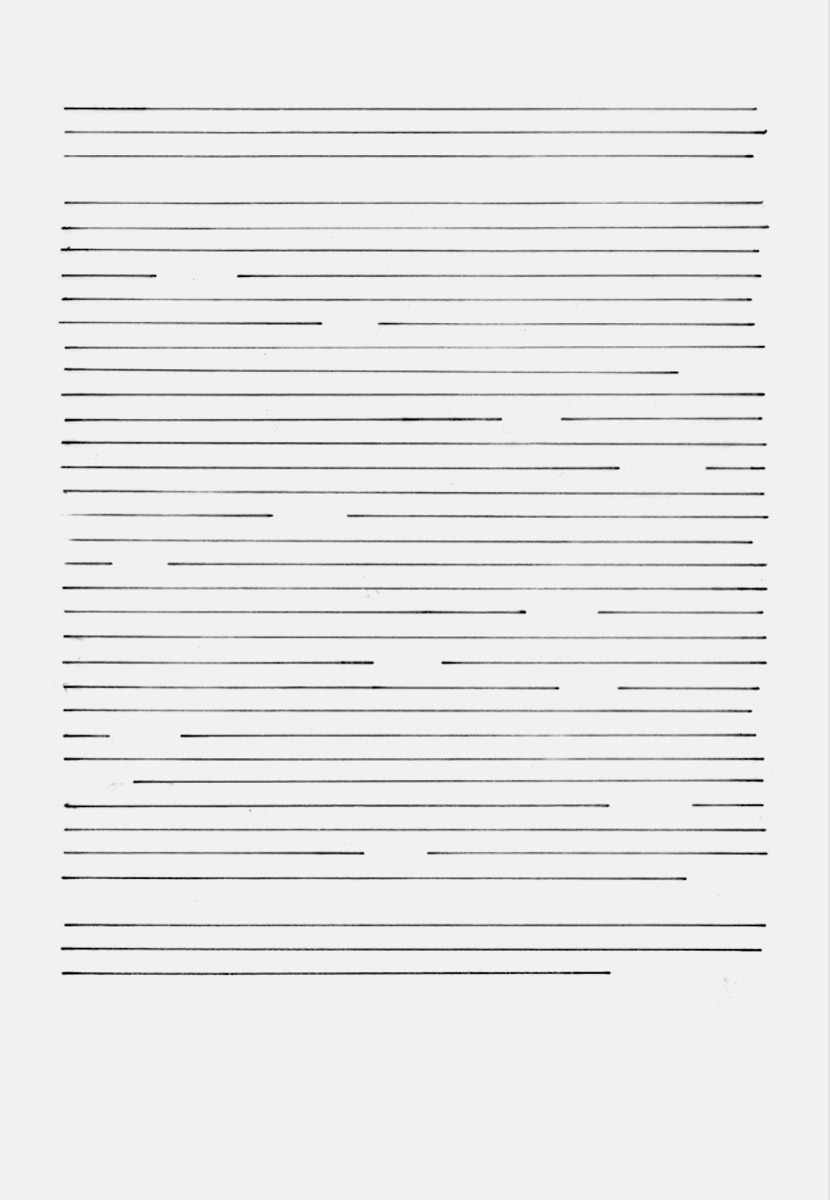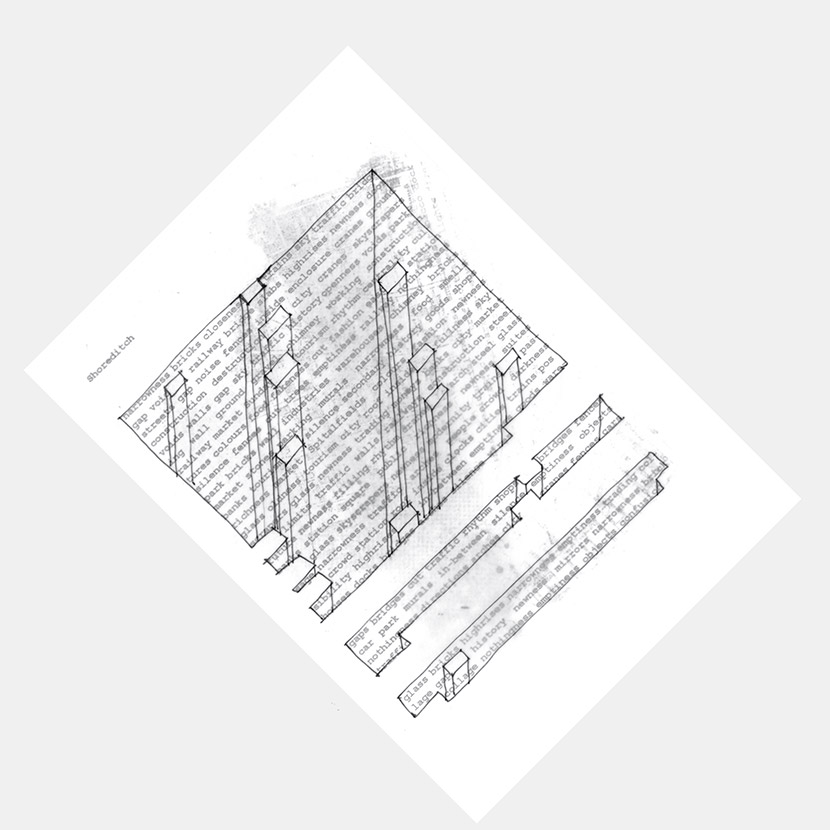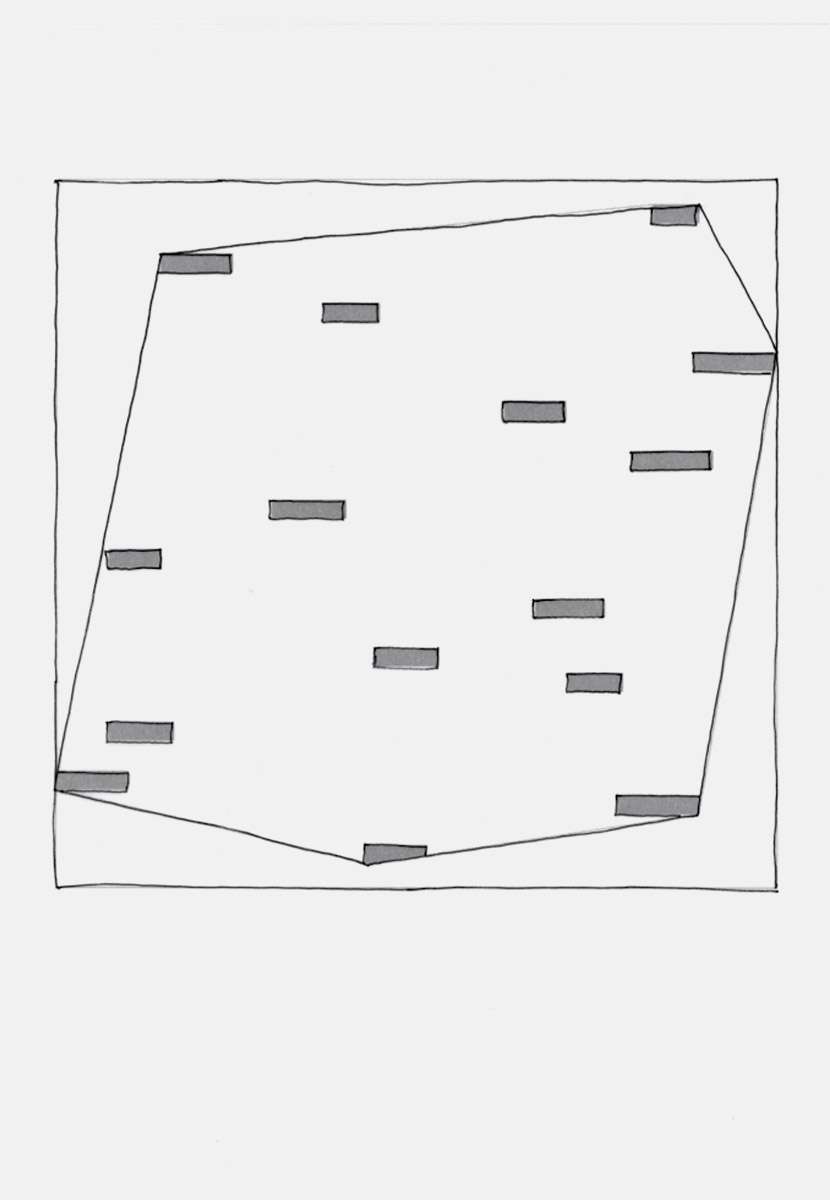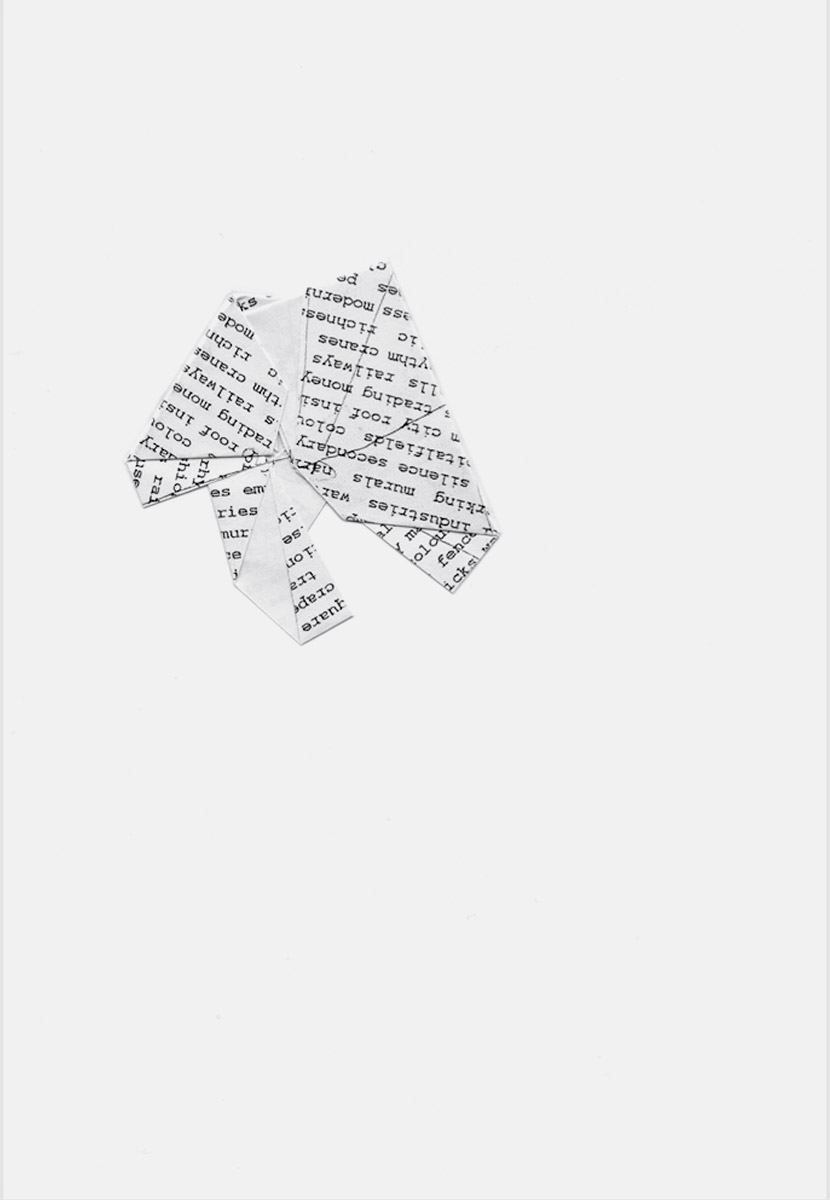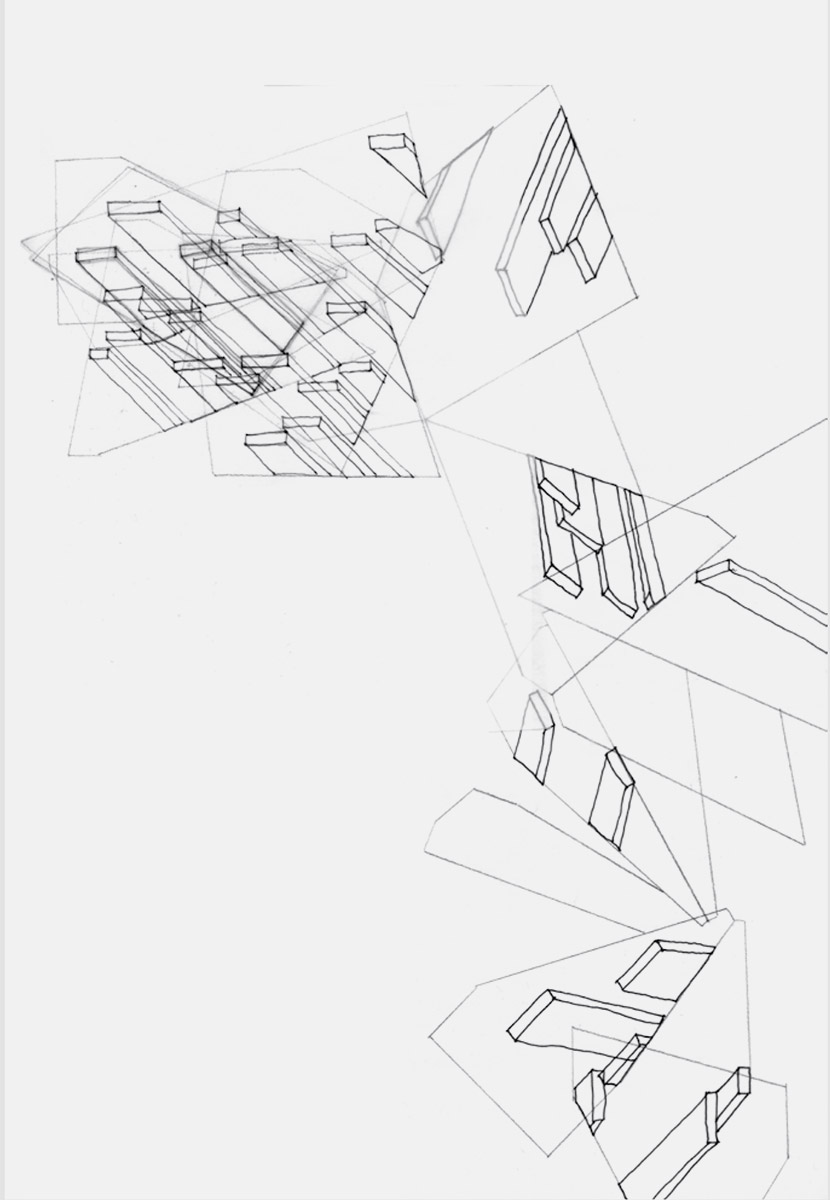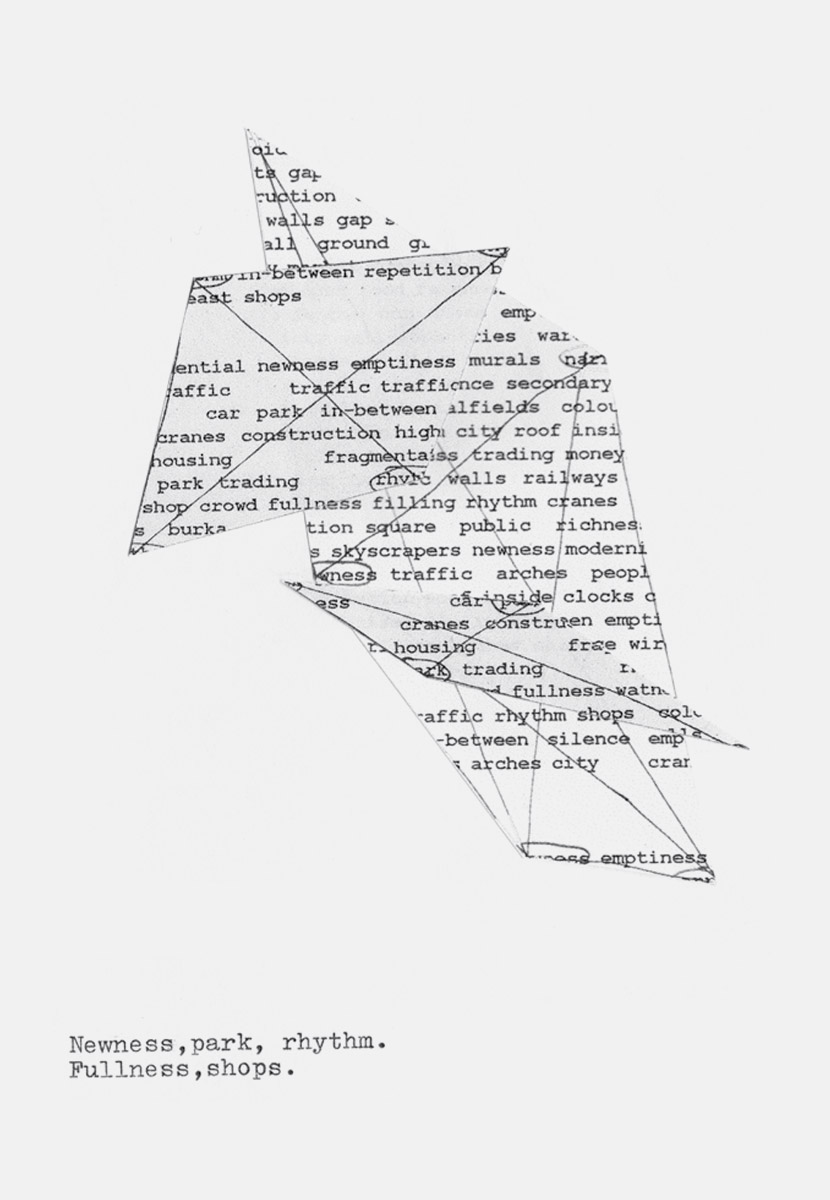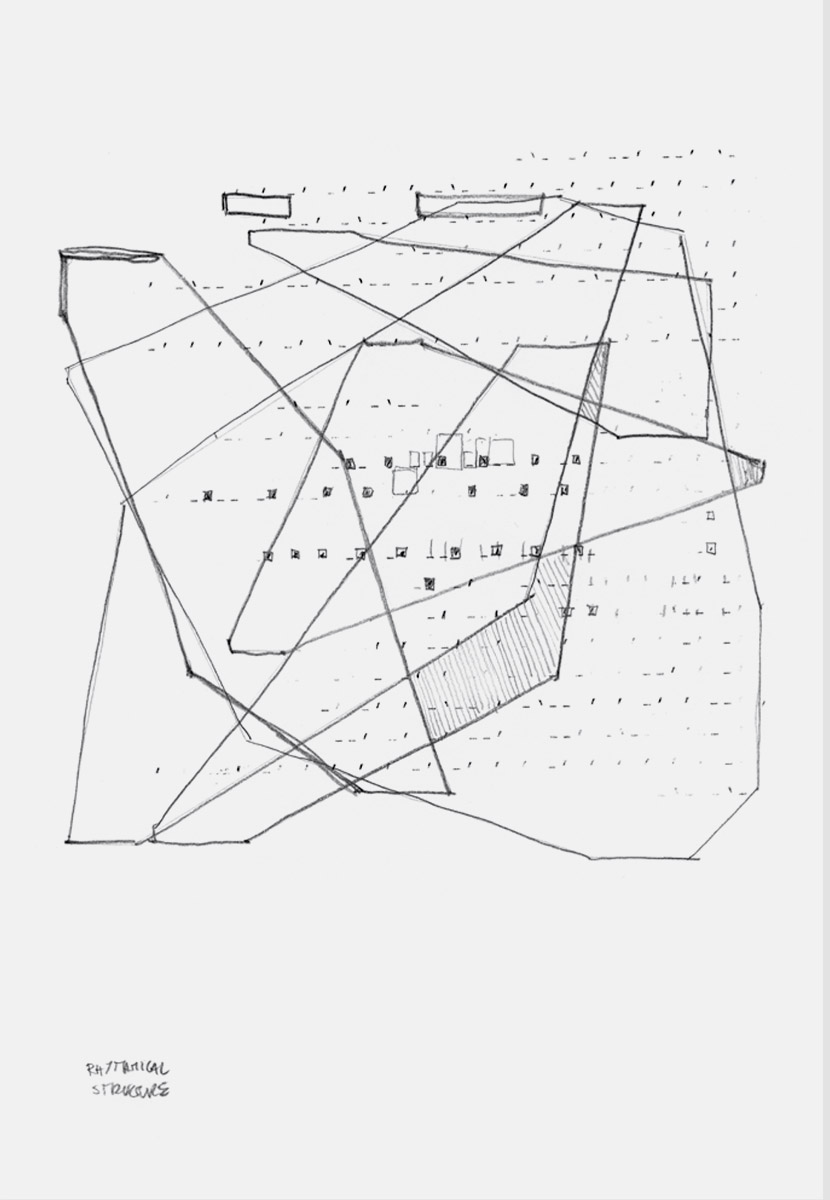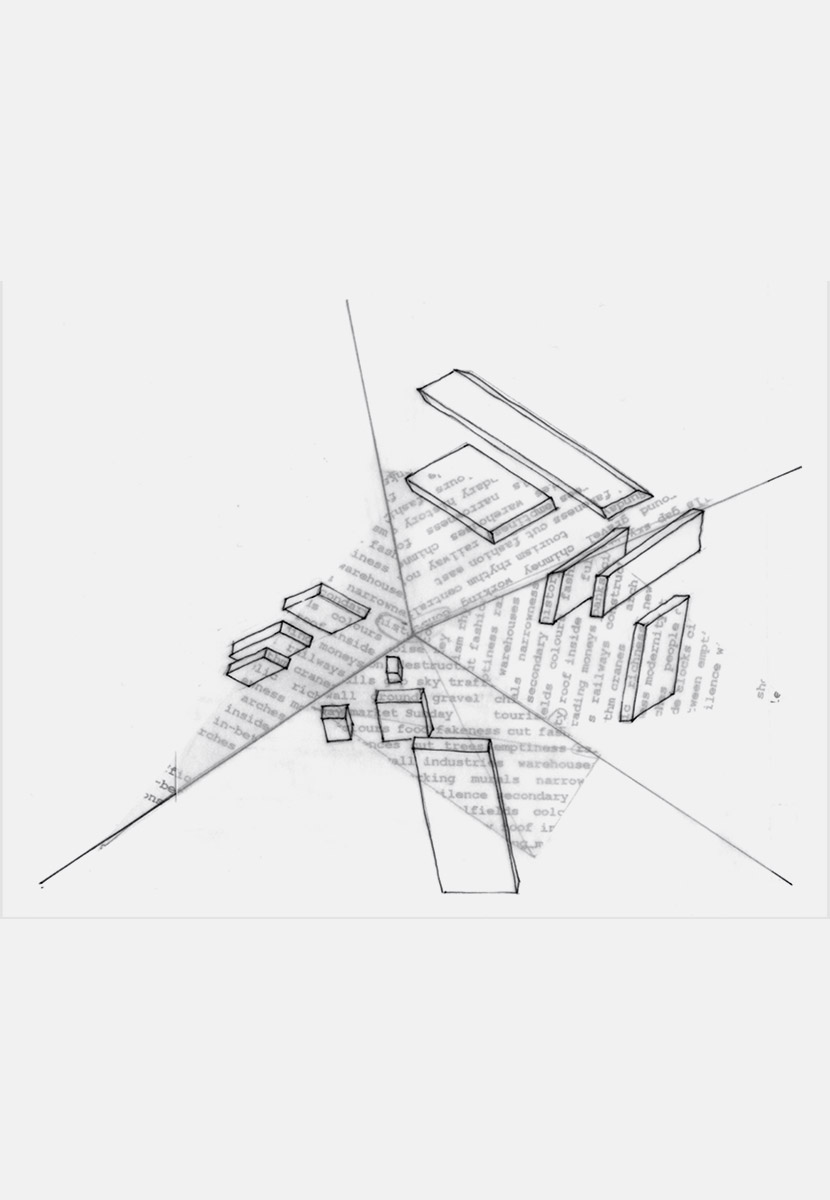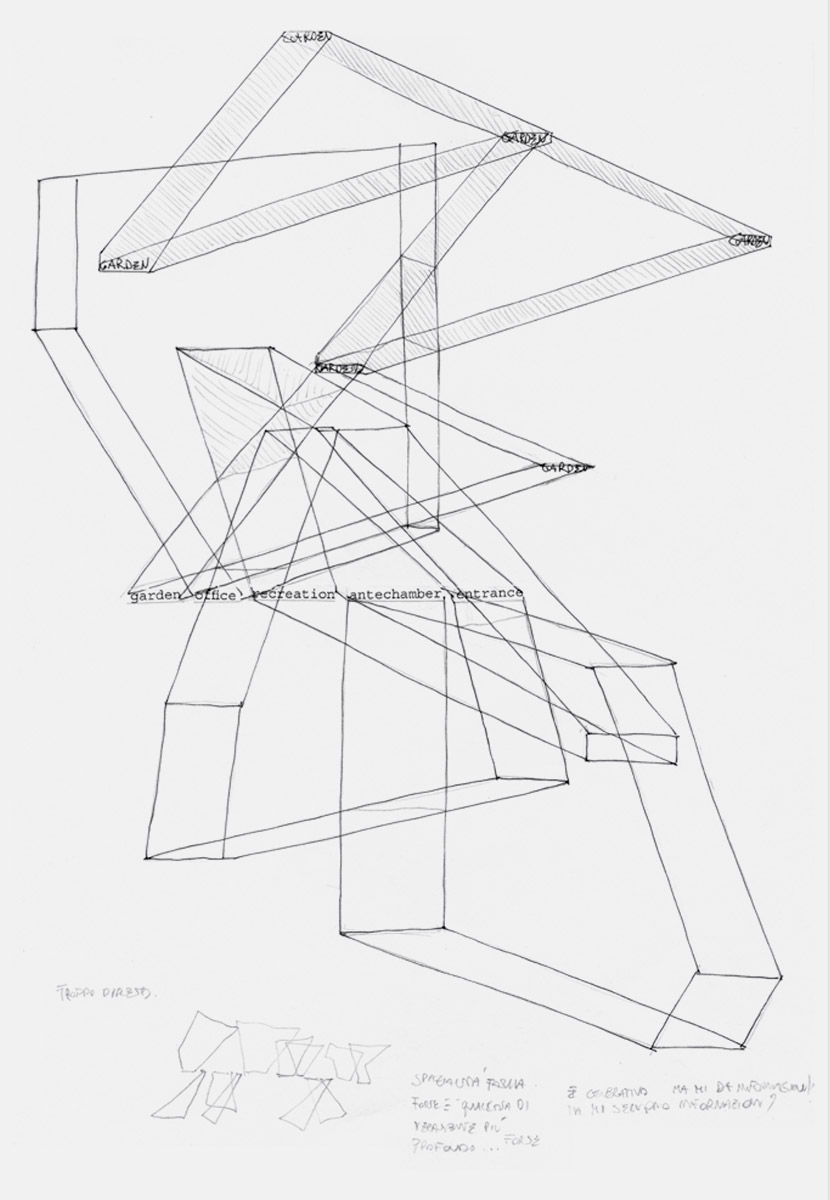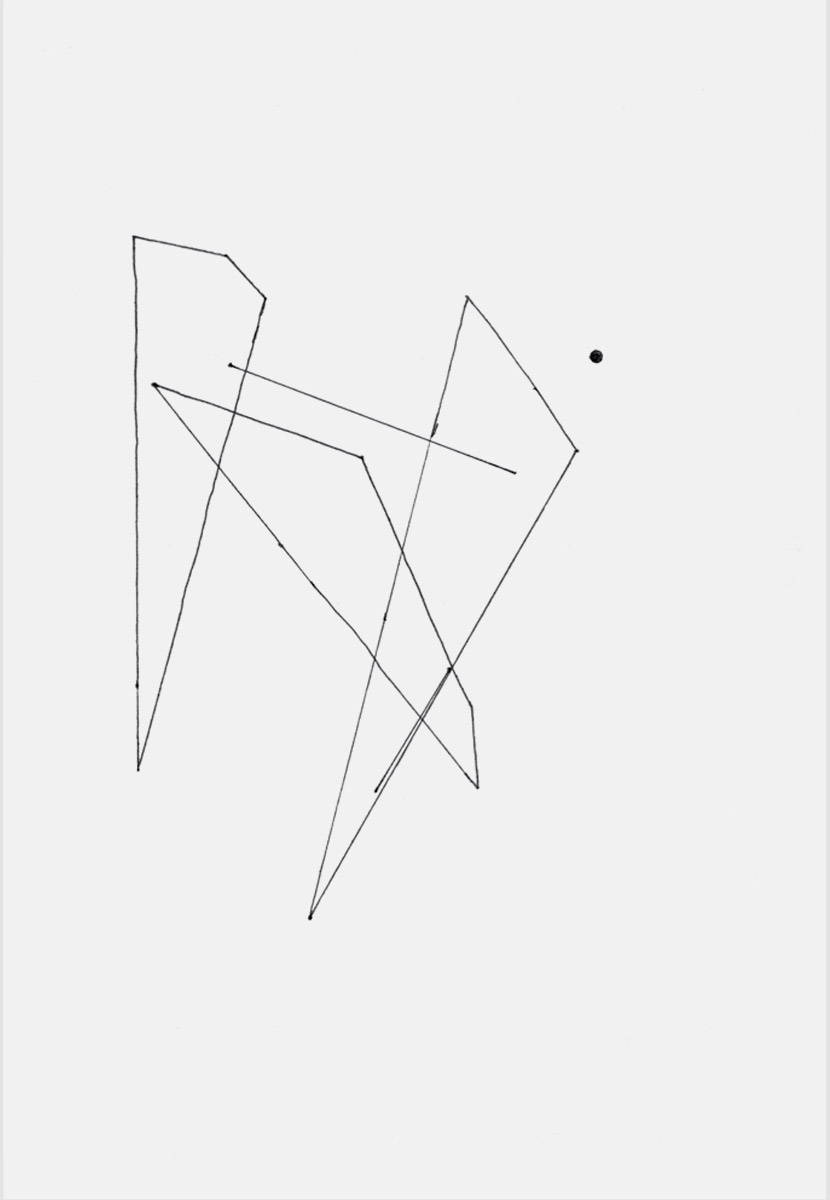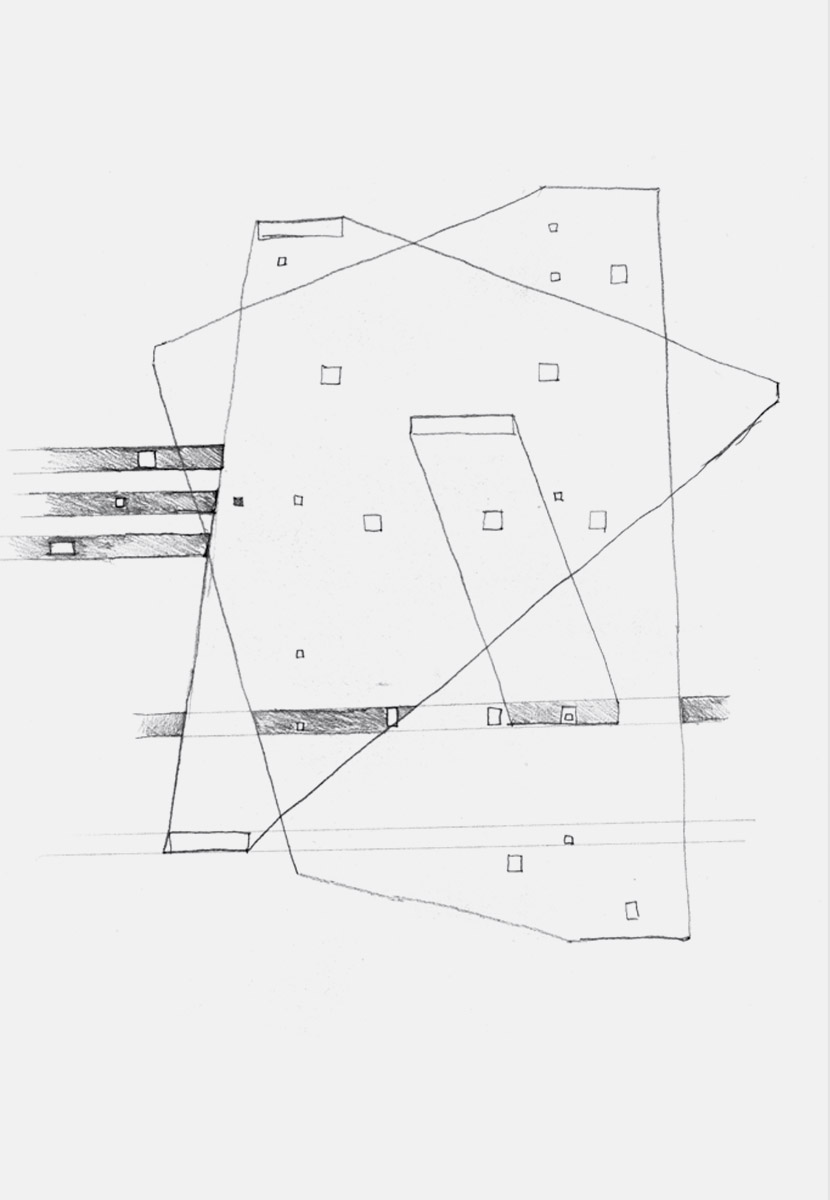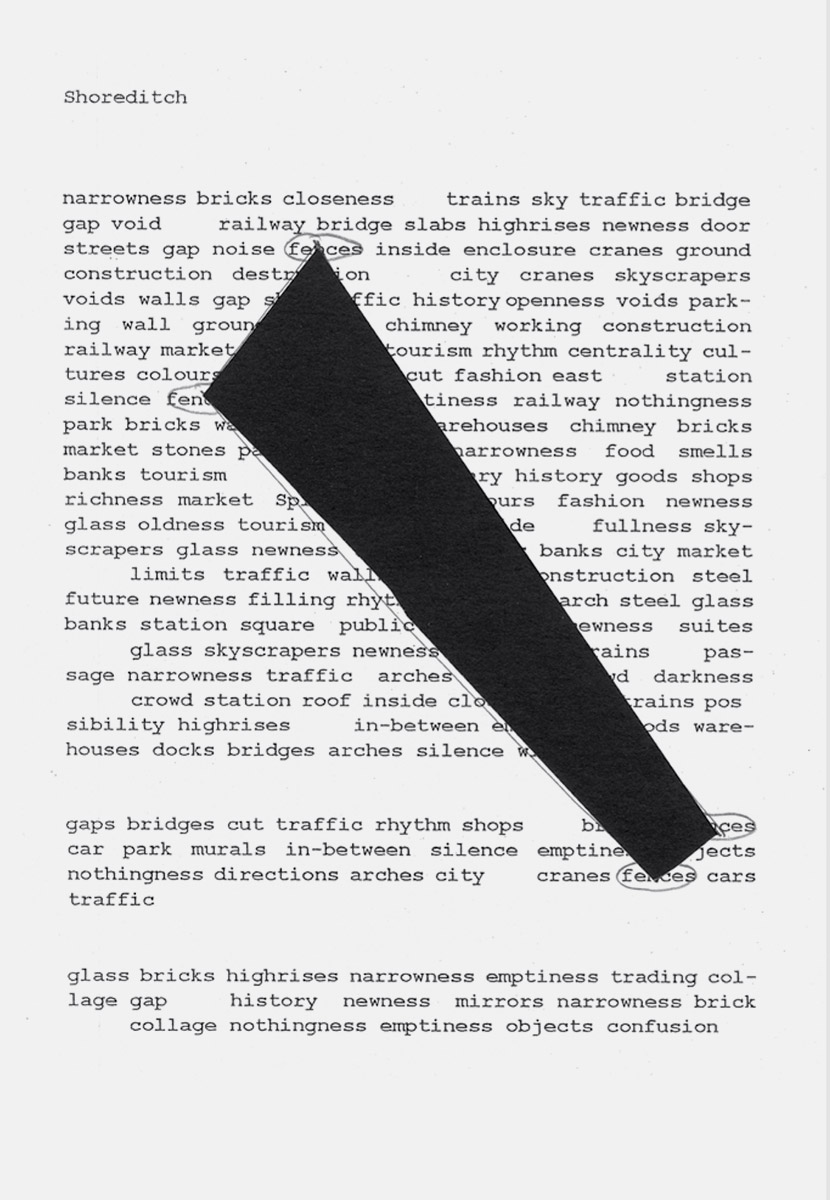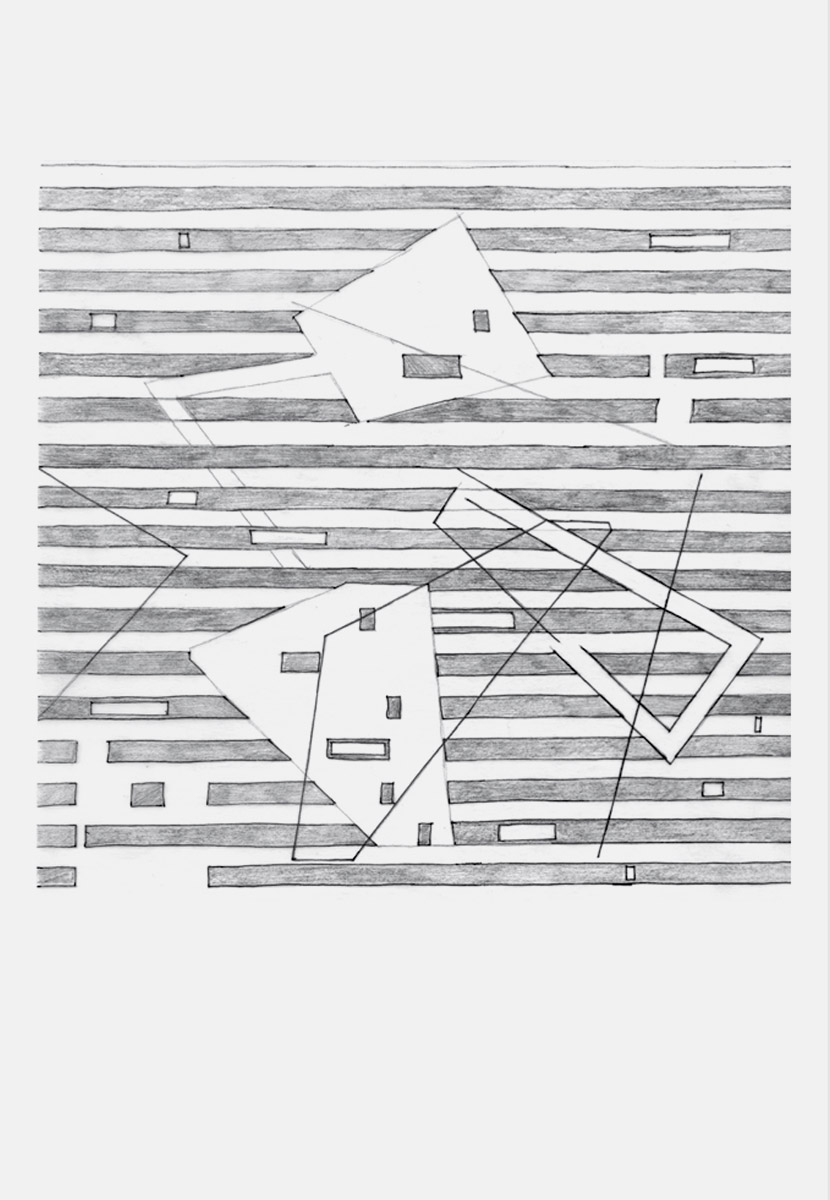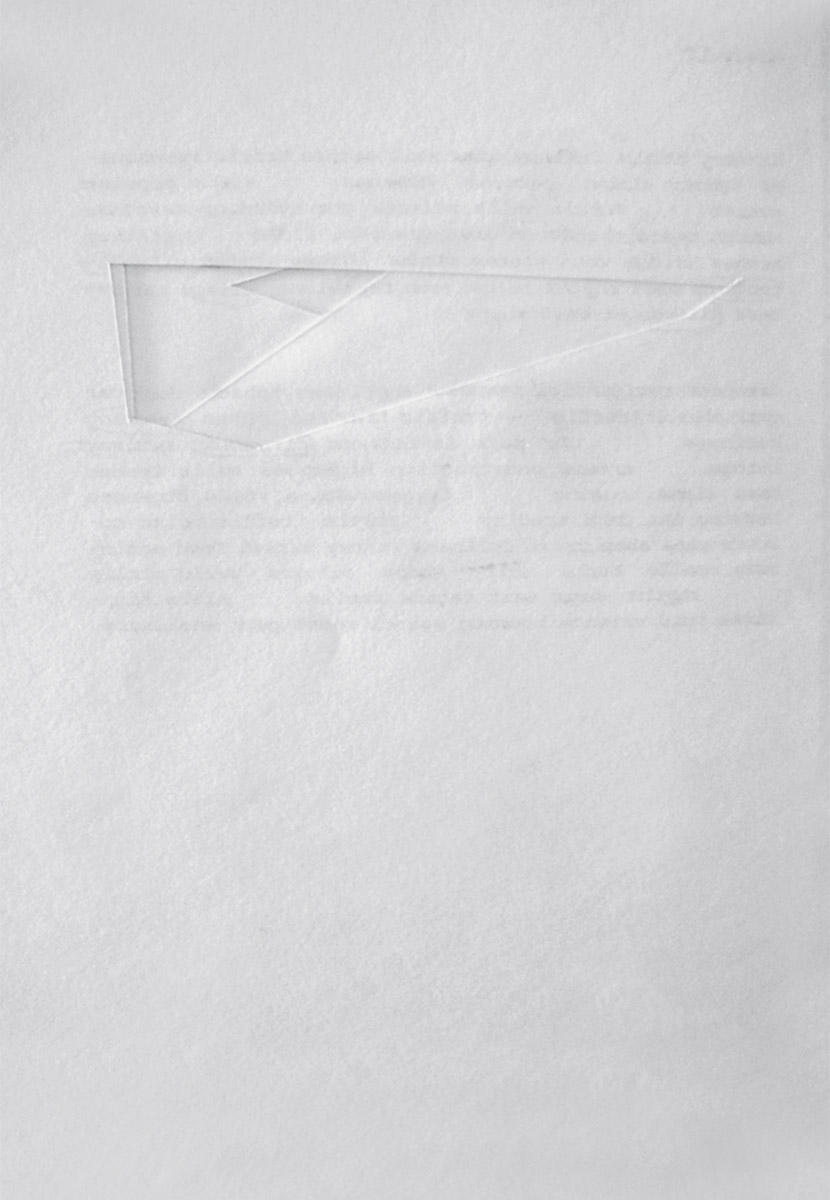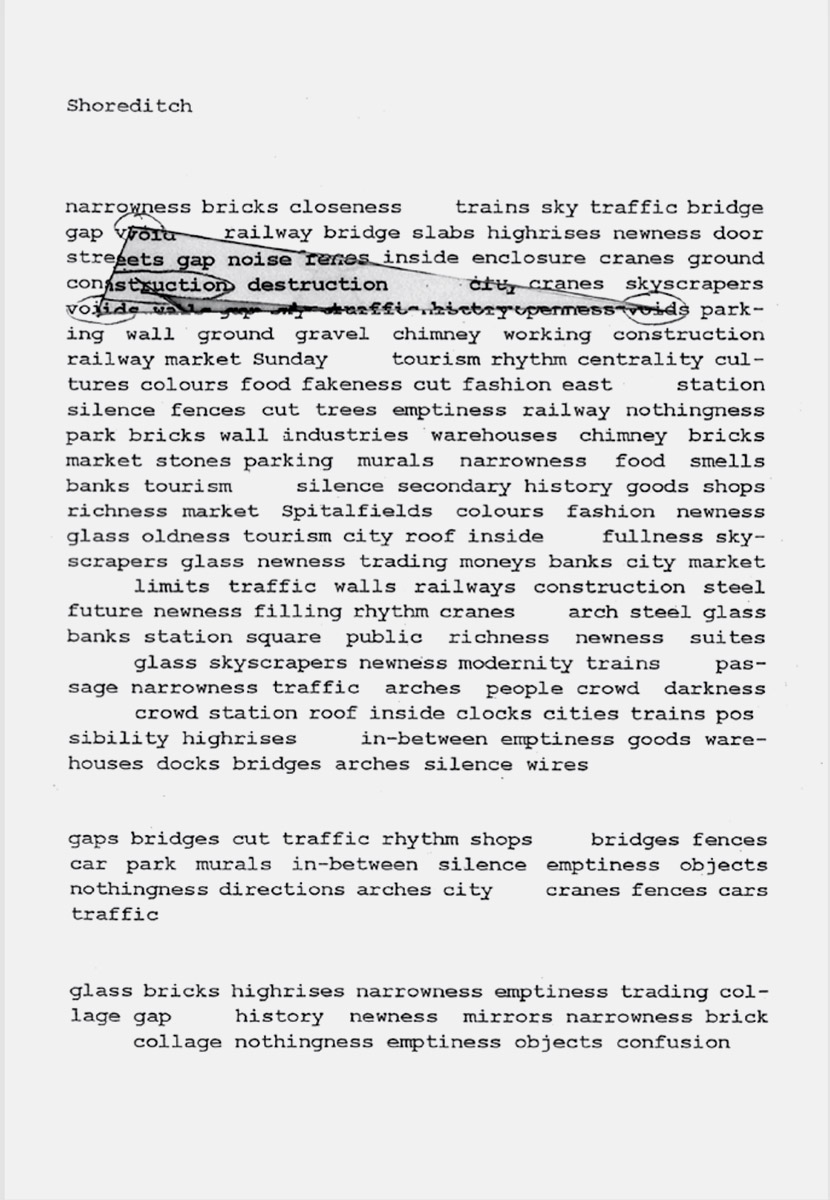THE CITY – A PRISON
Voids
Voids and deletions in the city texture are the start and end points of this modus operandi. The uncovering of a unique pattern and a sequence of repetitive elements began at this location, with the project establishing its roots right beside the city centre. The city appears as a sequence of perpetually changing elements among which the only permanent characteristic is silence: the recurring gap, the space between words, the pause between two steps.
Sequences
The experience of the city starts from the perception of its basic formal language constituted by concrete elements, spatial and volumetric characteristics, structures and pieces, walls, streets, fences, buildings, etcetera. Written language has been chosen as the means for representing this multiform reality. Through a kind of primordial act of creation or definition, the named elements are transformed into descriptive concepts, arranged in temporal, narrative sequences.
Places
Each description defines a place as an organised aggregation of elements, a scene expressing its own formal characteristics within the narration as a whole, for which a specific formal language is employed. The city is an inexhaustible library of stories, one of which is the narrative of this prison.
Erasures
Behind the page on which the ordinariness of the metropolis is inscribed in stark words, and between the worn stone pavements and separating walls, memories and fragments of other stories are preserved unnoticed. Things are hidden between the elements of a structure: a place, an object, a sound or a fragment from another time or place. These remains are difficult to understand and locate since they represent a remote memory of the past as well as a present enigmatic reality, a forgotten corner of the city, a gap or simply an erasure.
Borders
Defining borders is the tool used to determine within the urban fabric what is superfluous and what is worth keeping, what is necessary and what can be forgotten. Creating borders is a way of deciding the place where things will be initiated, the space where events can occur, things emerge, people move, where traces can be left behind and memories created. Borders are the limits beyond which the unexpected can unfold and the invisible becomes apparent.
Repetition
The city is an accumulation of interweaving stories. In this agglomeration of plots, recurring parts are always in transformation, and multiform realities that share a simple originating idea are represented in countless different ways. However, there are also elements that are unique and static, specific, timeless and part of our memory: these are the mythical memories. While walking in the street, opportunities for getting lost emerge from the infinite overlapping possibilities. You turn at a crossroad and chance upon one of the most beautiful cityscapes; you stop somewhere little known and remote and end up home; you encounter something and either get trapped in a dead end or eventually find the exit.
Rhythms
The quasi-musical arrangement of the parts of an architectural narration, important and visible to a greater or lesser degree, allows specific rhythmical structures and qualities of space to be perceived: the way volumes succeed each other, the thickness of the walls, their repetition, the visual qualities of the materials, the dimensions of the tiles, columns and beams. Everything could be important when constructing a spatial narrative: its starting point, pauses, moments of tension, ramps and stairs, open and quiet spaces, every smaller element constituting the functional phrases within the main plot. The rhythmic tensions sometimes become more important than the actual object itself, dematerialising into patterns of repeated surfaces, lines and shadows, or into an almost graphical arrangement of signs.
Correspondence
Spaces and places circumscribed by subtle lines drawn between absence and possibility, between images and texts or words and signs. Within the relationship between architecture and silence, it is the threshold between one story and another that separates and unifies, allowing the connection between otherwise distant spaces to happen and establish a narration.
Silence
In any architectural composition, the unused and undefined spaces where people can just stop and have a look around, have a chat, discover the plot of a spatial narrative, elaborate new ideas in the peaceful emptiness, relax and dream about being free from the persistent structure of forms and spaces, are of great importance and at the base of an architecture that could be truly comprehensible and meaningful.
Representations
The heterogeneous, peculiar, unexpected, invisible or hidden spaces present in the city are revealed by a change in perspective that is only possible within a new approach towards the canonical understanding of the urban form and its approximate representation. When reality is decoded as a proper formal language it will offer the possibility of writing specific spatial narrations established within a set of elements and forms intentionally framed and reclaimed from the city as a whole.
Traces
Some spaces are comparable to public squares or monuments in the way they kindle recollections and memories. Voids are the repositories of traces left by people moving, events happening, time passing, history evolving, stories being narrated. In these places, time starts to fold as the past overlaps the present and becomes something unique; in other words, capable of being immutable and multiform at the same time.
Composition 1: Sequenced Forms
The formulation of systematic relationships between a number of defined elements chosen from the multitude of possibilities is always a process of trial and error: combining, separating, overlapping, flipping and sequencing them in order to get as close as possible to a formal representation of a concept, idea, object or memory. These elements are therefore sequenced and composed to become meaningful pieces within the narration, a composition of elements tending towards a form, and thus conveying a meaning.
Composition 2: Form of a Sequence
By following a given rule or set of criteria, the composition of different spaces, volumes or architectural elements leads to a system of internal relationships. A flat notational representation becomes volumetric and temporal when these relations are interpreted into a narration of spaces and volumes: an ordered sequence of fragments suddenly rendering familiar forms within unexpected spatial arrangements; banal and ordinary pieces recomposed and framed within a sequence of compositional procedures.
Composition 3: Notation
The abstraction of the sequenced elements into a sign notation reduces the ordinariness and triviality of the raw fragments into an understandable representation. A new and unpredictable composition emerges and results in an enigmatic form which could be comprehensible, whose principles, compositional rules, narrative logic and proportions could perhaps be understood, but without really being able to say how and from where they originated.
Composition 4: Structures and Spaces
This formal representation manifests its novelty in an unexpected structure of spaces. The sequence of elements unfolds in the existing urban texture, assuming a new value within an old and unreadable context, demarcating or occupying a space where the construction of new meanings is possible, due to an altered logic and a system of grammatical structures.
Narrations
The composition is therefore resolved in a new interpretation of elements, spaces, forms and relationships, bound together in a unique narration of architectural forms within the city. The architecture becomes representative of a specific idea of city, disclosing its true formal reasons, rhythms, remote historical memories and underlying meanings in an understandable unfolding of forms, volumes, structures and spaces, thus reconstructing the plot of a formal narrative in the fragmentary urban fabric.

